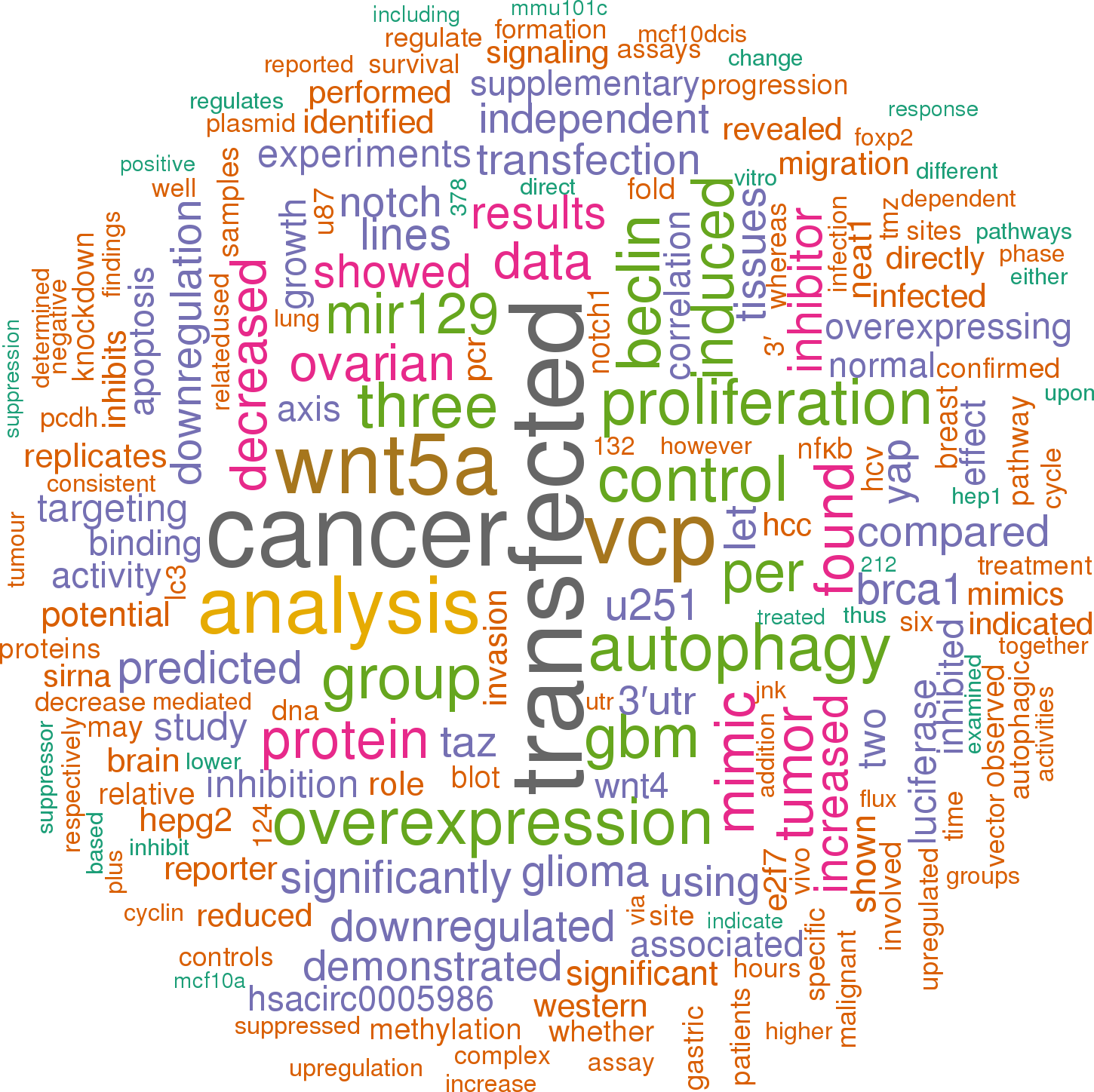Accession
MI0000252
Symbol
HGNC:
MIR129-1
Description
Homo sapiens
hsa-mir-129-1 precursor miRNA
Gene family
MIPF0000073;
mir-129
Summary
Caution, this is an AI generated summary based on literature. This may have errors. ?
MIR129-1 is a microRNA (miRNA) transcribed from the MIR129-1 gene located on chromosome 7q32 [PMC3576298]. It plays a role in various biological functions, including cell growth regulation, control of cell transition factors, tissue remodeling, immune responses, and inflammatory reactions [PMC6394761]. Recent studies have demonstrated the potential of MIR129-1 in improving liver function and suppressing inflammation and liver fibrosis in alcoholic liver disease and NASH animal models [PMC8138178]. However, there is no direct evidence from Parkinson's disease or Alzheimer's disease genome-wide association studies (GWAS) suggesting that MIR129-1 is a risk gene [PMC9645562]. One Parkinson's disease risk SNP (rs35048651) located upstream from MIR132 may act as a miRNA expression quantitative trait locus (eQTL) [PMC9645562]. In spinal cord injury studies, both MIR129-2 and MIR129-1 were found to be downregulated [PMC6515063]. The expression of MIR129-1 can be measured using TaqMan probes and normalized using the 2−ΔΔCq method [PMC7399878]. In functional studies, cells were transfected with a MIR129-1 mimic to assess its effects on gene expression using luciferase reporter assays [PMC7399878].
Literature search

120 open access papers mention hsa-mir-129-1
(1023 sentences)
(1023 sentences)
Sequence
58241
reads,
320
reads per million, 99 experiments
ggauCUUUUUGCGGUCUGGGCUUGCuguuccucucaacaguagucaggAAGCCCUUACCCCAAAAAGUAUcu
(((((((((((.(((..((((((.(((..(..((....))..).))).))))))..))).))))))).))))
(((((((((((.(((..((((((.(((..(..((....))..).))).))))))..))).))))))).))))
Structure
- C CU G uu cu c
ggau CUUUUUG GGU GGGCUU Cug c cu a
|||| ||||||| ||| |||||| ||| | ||
ucUA GAAAAAC CCA CCCGAA gac g ga a
U C UU g -u au c
Annotation confidence
High
Do you think this miRNA is real?
Comments
This miRNA sequence was predicted based on homology to a verified miRNA cloned from mouse cerebellum [1]. Expression of this miRNA was subsequently verified in a human osteoblast sarcoma cell line [2]. Reference [2] named the human/mouse conserved sequence miR-129b, but subsequent genome searches suggest that the same mature sequence may be expressed from two predicted hairpin precursors in both human (this entry and MIR:MI0000473) and mouse (MIR:MI0000222 and MIR:MI0000585). Landgraf et al. show that the 5' product of mir-129-1 (this entry) is the predominant one, whereas both 5' and 3' products are significantly expressed from mir-129-2 (MIR:MI0000585) [3].
Genome context
chr7: 128207872-128207943 [+]
Disease association
hsa-mir-129-1 is associated with one or more human diseases in the Human microRNA Disease Database
| Disease | Description | Category | PubMed ID |
|---|
Mature hsa-miR-129-5p
| Accession | MIMAT0000242 |
| Description | Homo sapiens hsa-miR-129-5p mature miRNA |
| Sequence | 5 - CUUUUUGCGGUCUGGGCUUGC - 25 |
| Evidence |
experimental
cloned [2-3] |
| Database links |



|
| Predicted targets |


|
Mature hsa-miR-129-1-3p
| Accession | MIMAT0004548 |
| Description | Homo sapiens hsa-miR-129-1-3p mature miRNA |
| Sequence | 49 - AAGCCCUUACCCCAAAAAGUAU - 70 |
| Evidence |
experimental
cloned [3] |
| Database links |



|
| Predicted targets |



|
References
|



